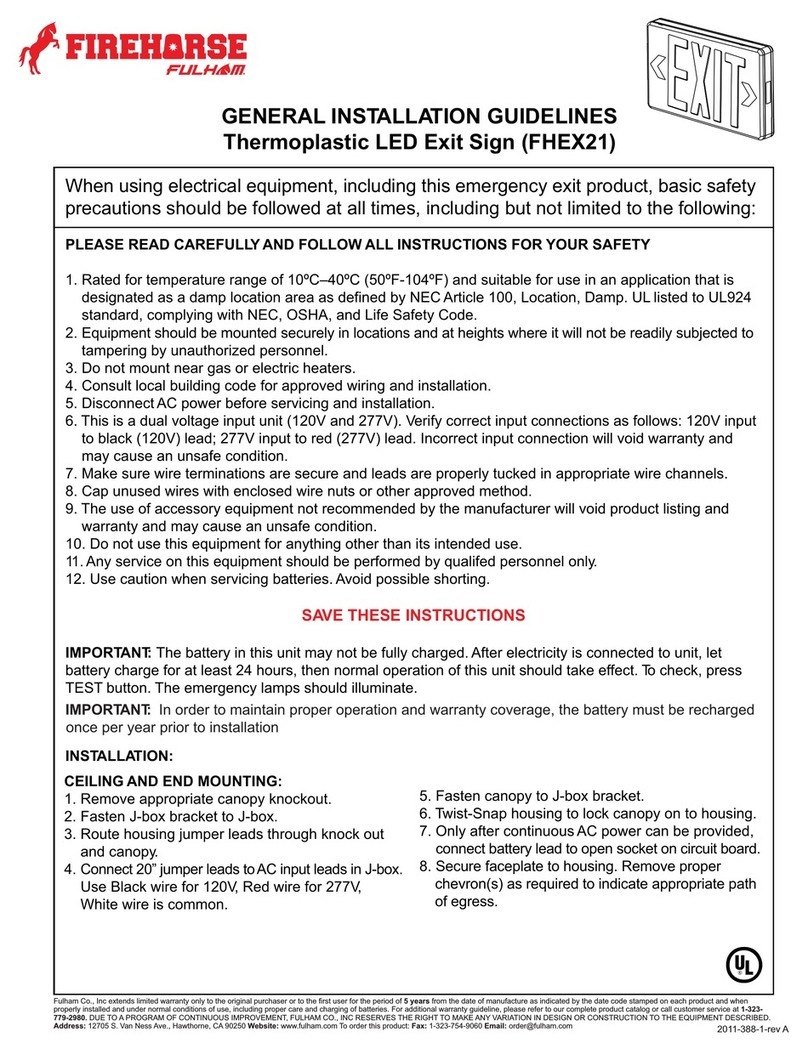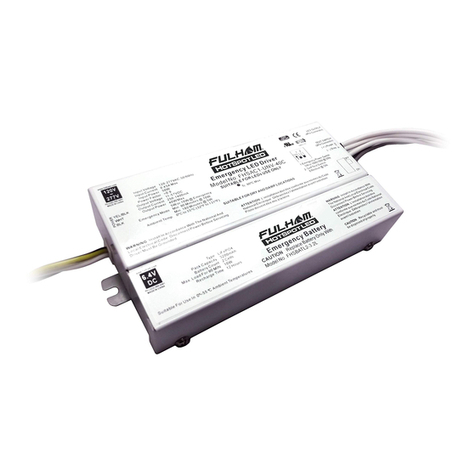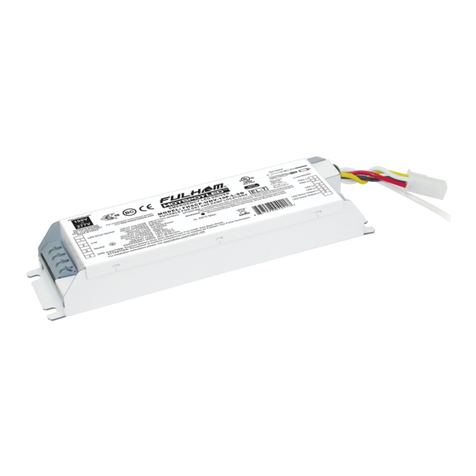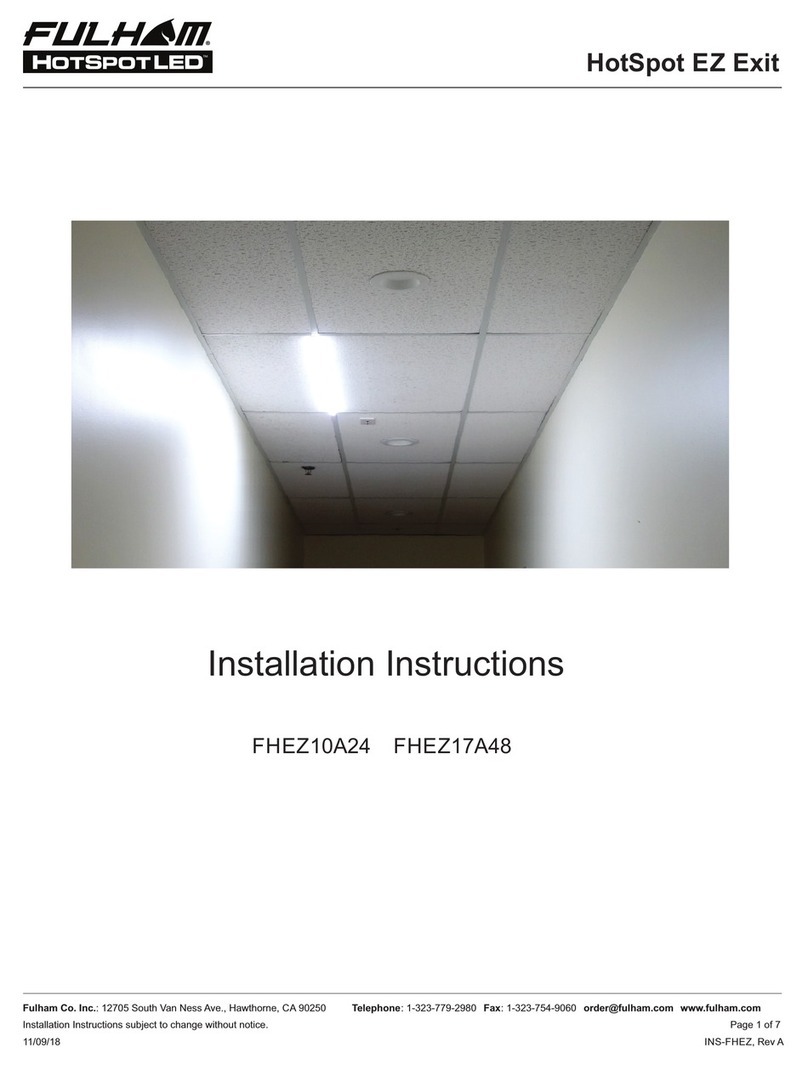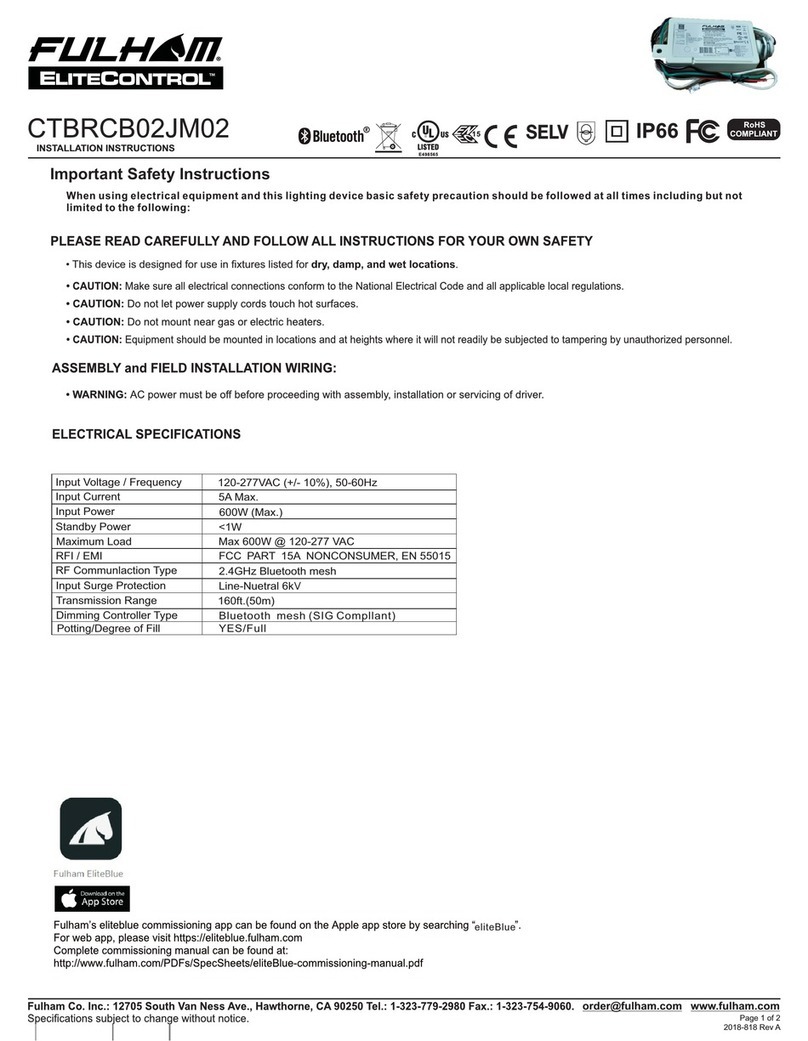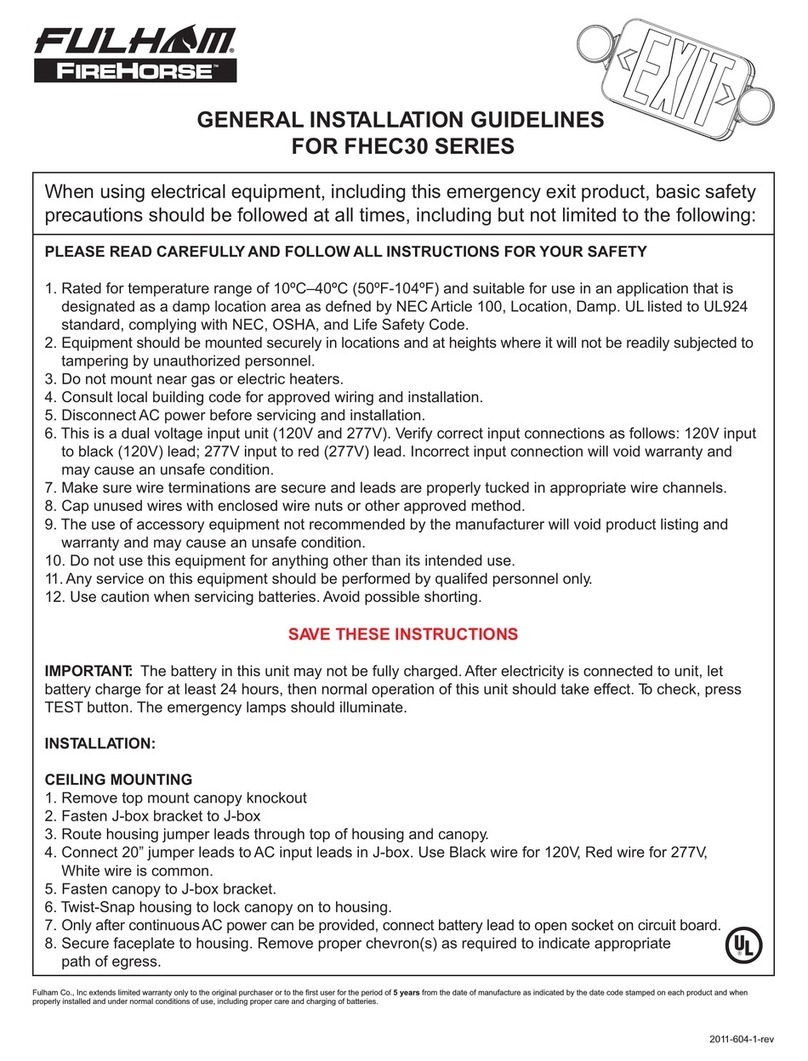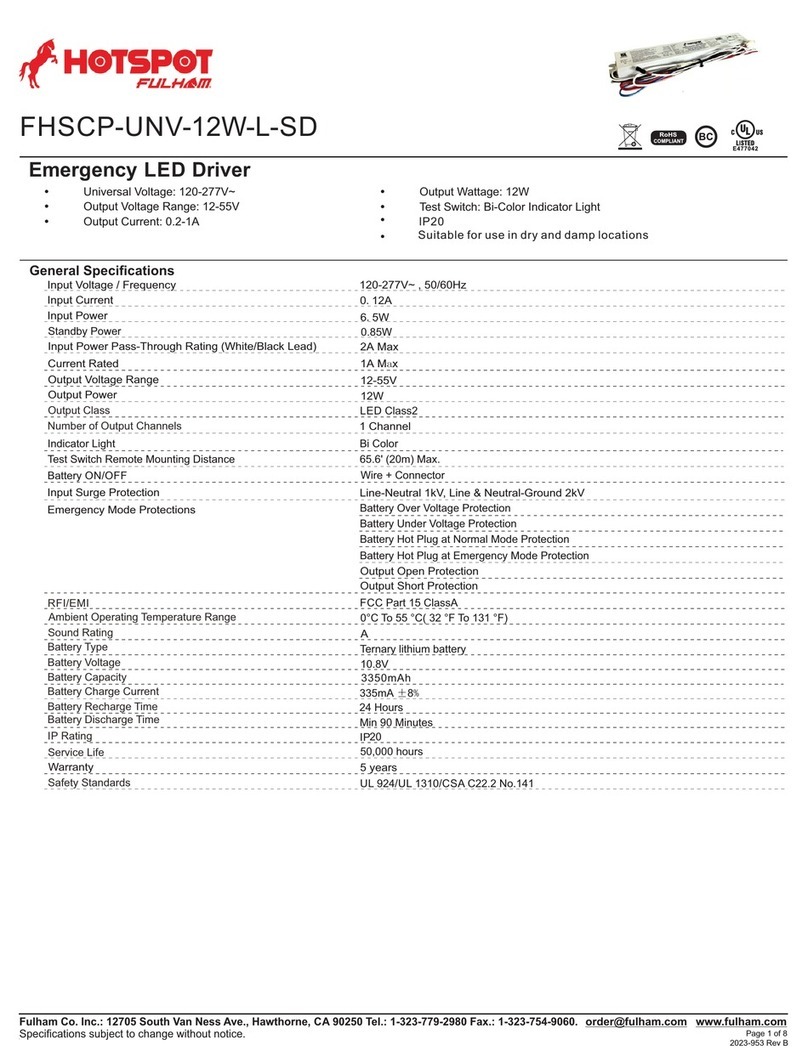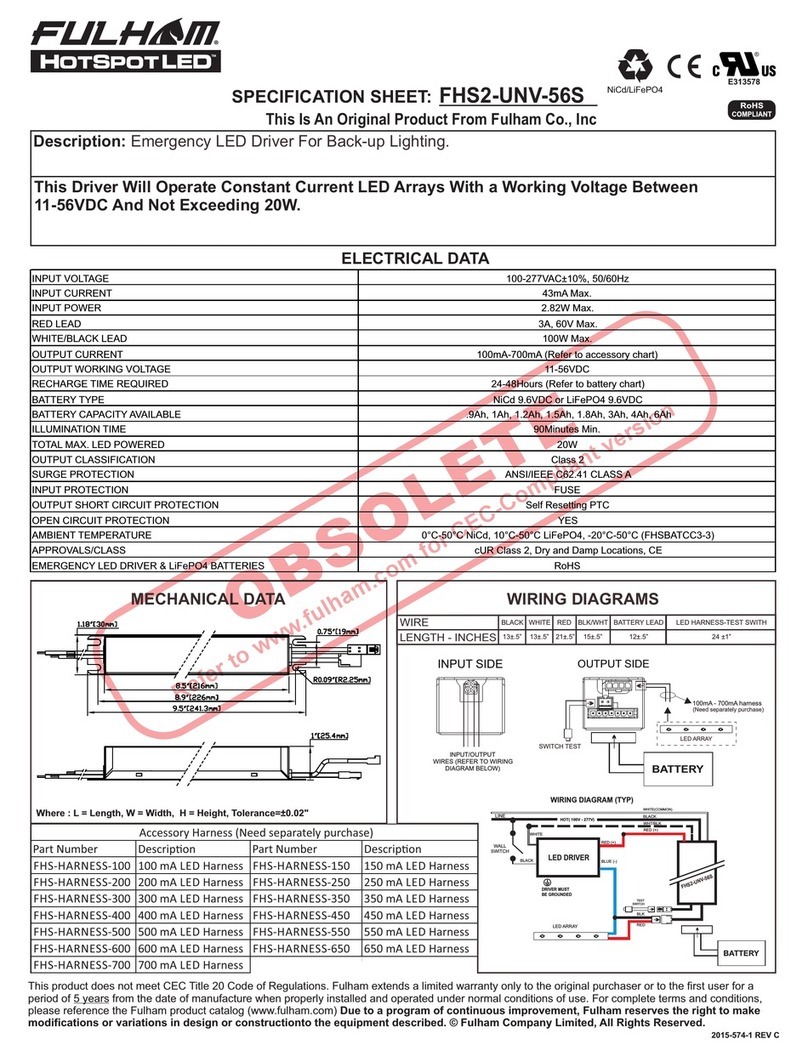
Guideline on calculating emergency illumination level
The purpose of this guideline is to identify the illumination level of the LED luminaire when used with Fulham's
FHAC1-UNV-70S LED emergency driver. The path of egress illumination level during emergency operation is
determined by types of luminaires, Luminaire Efficacy, Luminaire Mounting Height, Emergency Power and
some other effects in real application.
Step 1: Select an LED Luminaire, and make sure the LED light source is electrically compatible with Fulham's
LED emergency driver. Get the Light Distribution data (usually an .ies file) and Rated Efficacy data (lumen per
watt) from luminaire supplier.
If the luminaire is DesignLights ConsortiumTM (DLC) compliant, you can also get the efficacy information from
DLC website.
- Open DLC Qualified Product List(QPL) database search page: https://www.designlights.org/search/
- Searching keywords by model, brand name or manufacturer for the luminaire used.
- Find the “Efficacy” data listed on website or calculated by dividing “Light output” by “Wattage”, the efficacy
value should be shown in lumen per watt (lm/W).
If the luminaire is ENERGY STAR compliant, you can also get the luminaire efficacy information from ENERGY
STAR website.
- Open ENERGY STAR certified Light Fixtures database search page:
https://www.energystar.gov/productfinder/product/certified-light-fixtures/results
- Searching keywords by model, brand name or manufacturer for the luminaire used.
- Find the “Energy Efficiency” data listed on website. If it is showed as “Measured at the Source”, please
contact with luminaire supplier for additional light loss for this light source inside the fixture. The value should be
shown in lumen per watt (lm/W).
Step 2: Determine the Emergency Power and calculate the Emergency Light Output.
FHSAC1-UNV-70S is programmable output; setting a proper Emergency Power is vital to achieve desired illumination.
Emergency Light Output is equal to the Emergency Power multiply by luminaire efficacy. For example, if the luminaire is
120lm/W and in 3W emergency operation, the total Emergency Light Output is 120lm/W * 3W = 360lm.
Step 3: Use industry lighting design software to calculate the illumination level according to the luminaire layout in room,
luminaire mounting height, the original .ies file and Emergency Light Output calculated above. If the illumination level
cannot meet life safety codes, go back to Step2 to use a higher Emergency Power or go back to Step1 to select a
higher efficacy luminaire or use more luminaires in the room.
Fulham's FHSAC1-UNV-70S LED emergency driver is compliant with UL 924 standard, according to UL test data, Table
1 and Table 2 below give basic indication to determine the min. Emergency Power and Luminaire Max. Mounting Height
for 1 foot-candle illumination based on a single luminaire with typical Lambertian distribution.
It is the light designer/ construction contractor's responsibility to validate the real illumination level on site, to assure the
emergency light illumination level is in accordance with the requirement of Federal, state and local municipal codes. It
may diff to the theoretical calculation or simulation on computer.
80 5.0 W
Table 1. Min. EM Power for 1fc @ 10ft vs. Luminaire Efficacy Table 2. Max. Mounting Height vs. Luminaire Efficacy
Luminaire Efficacy
(lm/W)
Min. EM Power to achieve
1 fc @ 10ft Mounting Height
INSTALLATION INSTRUCTIONS
EM 3W EM 5W EM 7W
80 8.1 ft 10.1 ft 11.1 ft
100 8.9 ft 11.2 ft 12.4 ft
120 9.6 ft 12.1 ft 13.4 ft
140 10.3 ft 13.0 ft 14.5 ft
160 10.9 ft 13.9 ft 15.5 ft
180 11.5 ft 14.6 ft 16.7 ft
Max. Mounting Height for 1fcLuminaire Efficacy
(lm/W)
20012.2 ft 15.3 ft 18.0 ft
Page 3 of 6
